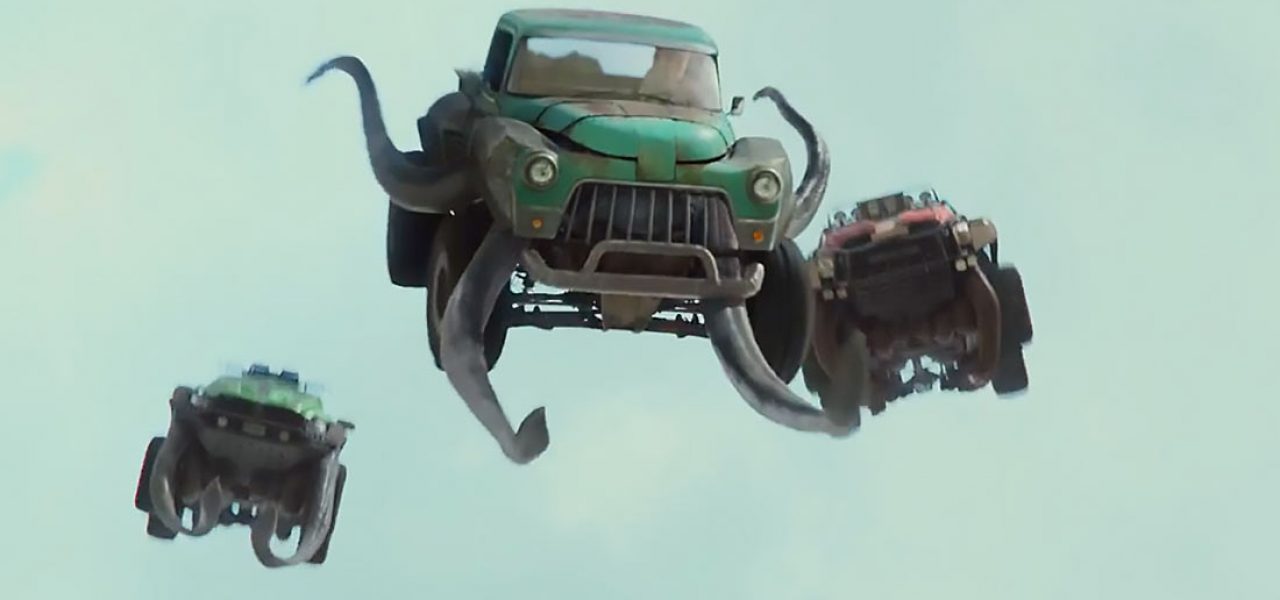
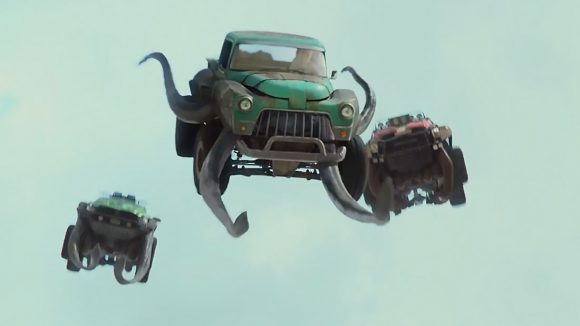
Q&A: Director Chris Wedge on the Road to ‘Monster Trucks’
Chris Wedge, the co-founder of Blue Sky Studios, is no stranger to visual effects. One of his first projects in the industry was contributing to one of the most influential vfx projects in history, TRON. Later, Blue Sky was also involved in live-action effects for a number of years before it focused on animated films, with Wedge helming the Oscar-winning short Bunny and then Ice Age, Robots, and Epic.
But the director had to embrace live-action vfx once again for Nickelodeon Movies and Paramount Animation’s Monster Trucks, the much-delayed film finally releasing tomororw, for which he took a sabbatical from Blue Sky. Although not venturing too far from the director’s animation expertise—Monster Trucks centers on a hero cg character called Creech, one of an undiscovered species of oil-consuming underground sea creatures—the film still presented several challenges in telling what Wedge describes as a ‘big, fun, and broad’ story.
Wedge spoke to Cartoon Brew about moving from animation to live-action, his surprise and awe at the approach to the vfx work, how he helped craft the personality of the lead creature, and why he’s a fan of using preview audiences while a film is in production.
Cartoon Brew: You worked in live-action visual effects for a couple of years before Blue Sky became solely an animation studio. Coming back into the live-action world with Monster Trucks, what did you notice in terms of any big changes and developments in how vfx were done, or what might have stayed the same?
Chris Wedge: Well, the last live-action that I actually shot myself was in college. But, yes, when Blue Sky was coming up we did do a lot of effects work and we had to be very careful, mostly due to the level of our technology, when we shot things. We locked off the camera as much as we could, although I know we used some repeatable rigs every once in a while. There was no such thing as roto’ing by hand. Well, there was hand roto, that’s all there was. But it was too time consuming to do.
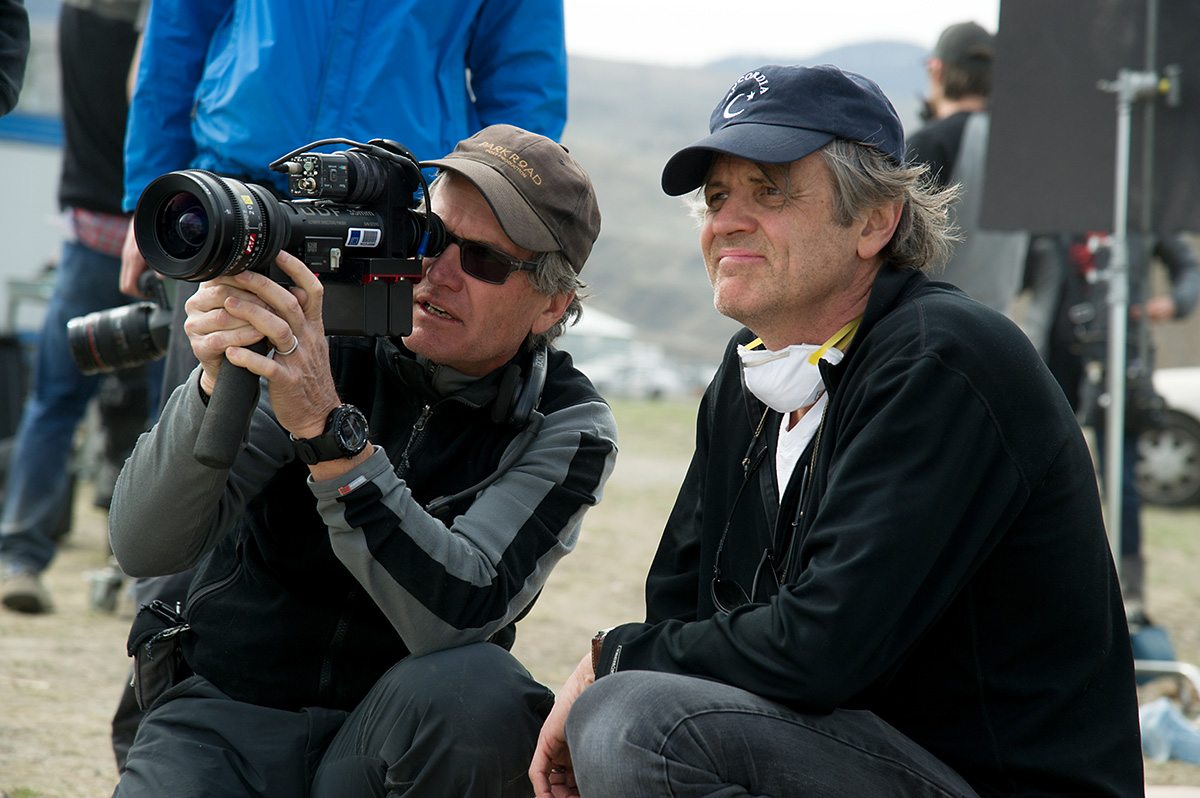
And then on this movie, I went in with the effects company [MPC] assuming there’s going to be all sorts of technology around when we shot the plates. And, you know, we’d be there in the middle of nowhere in the middle of the night in a junkyard set that we’d made with all this grit and complex environment to interact with and integrate to. And I’d say, ‘Don’t you guys have some markers or don’t you take some measurements here?’ Or, ‘Isn’t there some piece of camera gear that can repeat the move or something?’ And they’d say, ‘No, we’ll just roto it. Whatever you cut, we’ll roto.’
And they did. I mean, we did magnificent stuff with just handheld cameras that was all rotoscoped and then they would start laying the creature in. This is the long way to answer your question that, yes, it’s absolutely advanced a thousand-fold from where we were. The amount of integration they could do was mind-blowing. I really could ask for anything and I’d get it without complaints.
Coming from animation, what then were some of the hardest things to do in a live-action film?
Chris Wedge: Oh it’s a pretty good trade-off, I’d say. In animation you struggle for every performance. You work hard for every character performance. And on a movie set the performance comes with the actor. It’s their job. You don’t have to tell him or her how far to move their eyebrows and how long to hold it to make the expression play. It just comes. That collaboration with the actors and everyone on the set was fascinating and rewarding for me. I loved blocking things out in the morning and bringing the actors in and shooting out the set. It was just fun.
On the other hand, my experience in animation counted obviously where the creature animation came in – just developing that from scratch and coming up with a concept for how it would look and how it would fit in the car, how it would move when it wasn’t in the car, and how it would make the car move. There was a lot of previs that was done before the shoot. And it was a very, very long post schedule on the movie. We had maybe 1200 creature shots to animate and integrate.
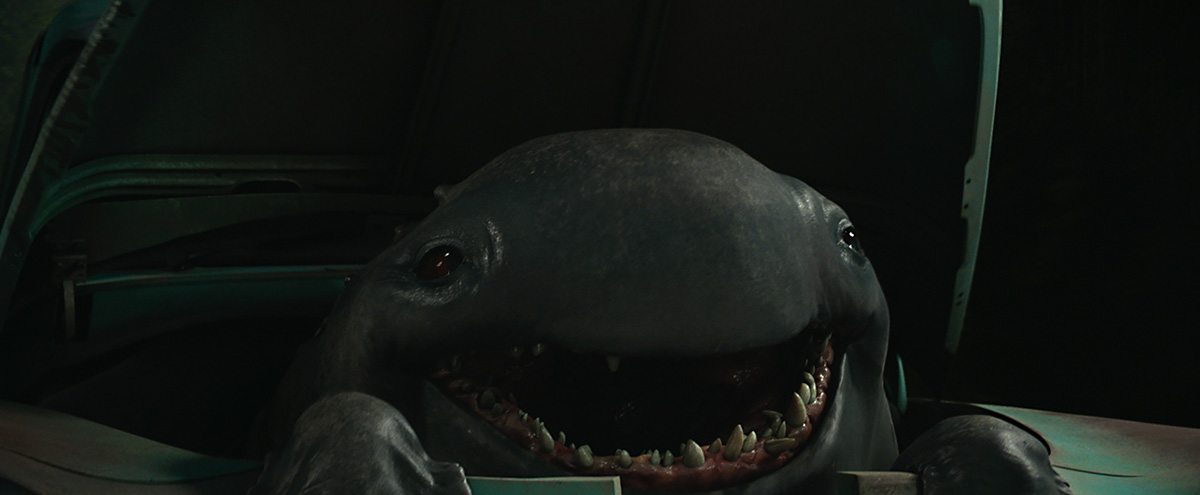
Can you talk about Creech and what you did to bring out his personality?
Chris Wedge: Well, the concept of our movie, in case it hasn’t occurred to you, is really silly. It’s just big and fun and it’s a very broad idea, and I wanted to make the contrast between reality and our monster as crisp as I could. I wanted to ground the live-action, I wanted to ground the movie. So I set it in this North Dakota boom town, and I put a kid that was down on his luck in a gritty junkyard, and I wanted the creature to seem as real as I could, but as impossible as I could. So we used reference from everything—from an octopus to a walrus to a seal and a beluga whale.
And I wanted it to emote like an animal, not like a character. It has the range of expression that maybe your dog does. I knew it was all going to be in the eyes. I wanted the limbs to all feel heavy and labored under gravity in the world, so everything that he did when he was out of the water was difficult and I wanted to convey that. So I think you got most of it from his attitude, from his head poses, and the expression you get from his eyes. I just didn’t want him to come off as a cartoon at all.

On top of that, lot of emotion comes from the truck itself, which is a mechanical object, and clearly Creech is in it, but can you talk about getting some emotion from the truck as well?
Chris Wedge: I always thought that the truck was a character, and I pitched that over and over and over. And it’s the thing that results from this kid and this creature in this truck that he built. So the idea was that this weird creature comes squirting out of the ground. He’s as helpless on land as an octopus is. But when you put him into this shell of a truck in a certain way it becomes a super suit for him. So he can move really fast, he can hide in it and it protects him, but it can also move in unexpected ways. And that’s what I wanted to convey. And because the film is supposed to be a fun big family adventure I wanted it to look like it was having fun.
So I pitched that over and over and over – it’s going to be fun, the truck’s going to look alive. I wanted it to move the way that it might when you’d take your little Matchbox or Hot Wheels car when you were a kid, and you were running it around the kitchen table or over the arm of your sofa. You could make it jump and go, ‘Zoom, zoom!’ That’s how I wanted the truck to move.
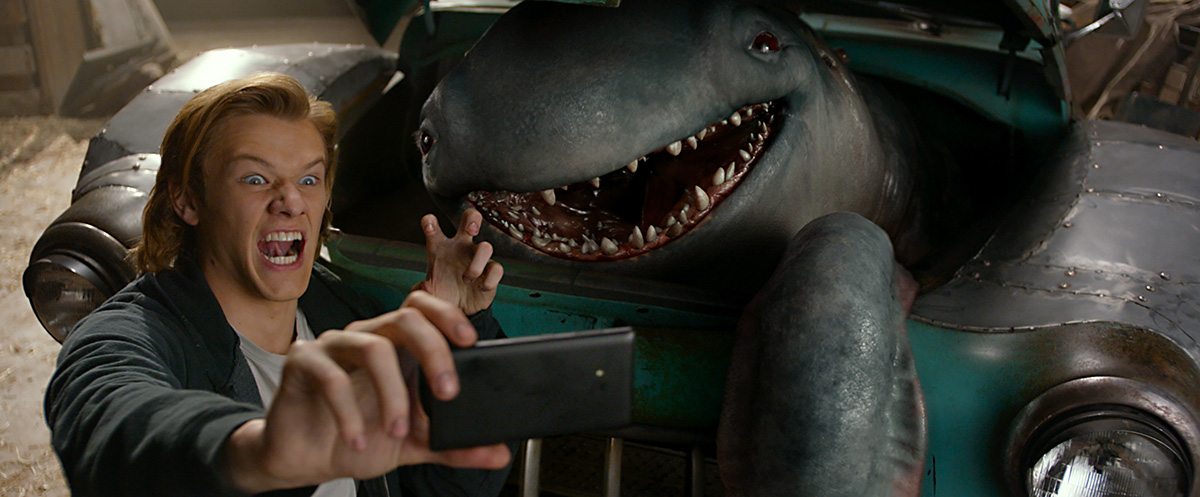
We accomplished that on a number of different technical levels. One was that they built a life-size animatronic truck with all electric motors, and that you could actually drive this truck down the road with nobody in it using an RC controller, but you could also make it almost stand up on its hind legs, you could make it lean and tilt and move and emote. So we got to do that in the scenes with the actors and then we added the creature in. And when it came to the action sequences or wider shots where we really needed more emotional expression from the creature, we went with all-cg roto’d in.
How were you achieving shots on set that would later have the cg Creech in them?
Chris Wedge: We had all sorts of stuff to help. Sometimes we had people in green suits crouched underneath things to make them move or for them to pat on the head. Other times we actually made a giant beanbag chair version of Creech that had a few parts they could push around. You’d have props people on one side of the beanbag version of Creech pushing at the actor on the other side, and that interaction ended up looking pretty convincing.
You’ve voiced some characters before in films, famously with Scrat. Did the same thing happen here?
Chris Wedge: I thought about it but I was so busy. We did most of the voices taken from sea mammals – whales and walruses – and I think some bears were in there. Dogs even, I think, at one point. There’s so much manipulation going on. But also for some of the sequences where we really wanted to create very specific emotions or efforts we used our own voices and pitched them around and pushed them in there.
Can we talk about some specific scenes – the first is really the introduction to Creech where he’s drinking oil on the car crusher and then almost gets squished himself. What kind of iterations did that go through?
Chris Wedge: Early on in the development process I just was trying to come up with ways to get Creech and Tripp together. I wanted Tripp to be angry, I wanted him to capture the creature, but I also wanted him to bond with it just for an instant before the crushing is about to start. A lot of that was worked out in boards, but when we got to the set—honestly what I like about that sequence is—we didn’t stick to a shot plan. We ran around and we shot and shot and shot.
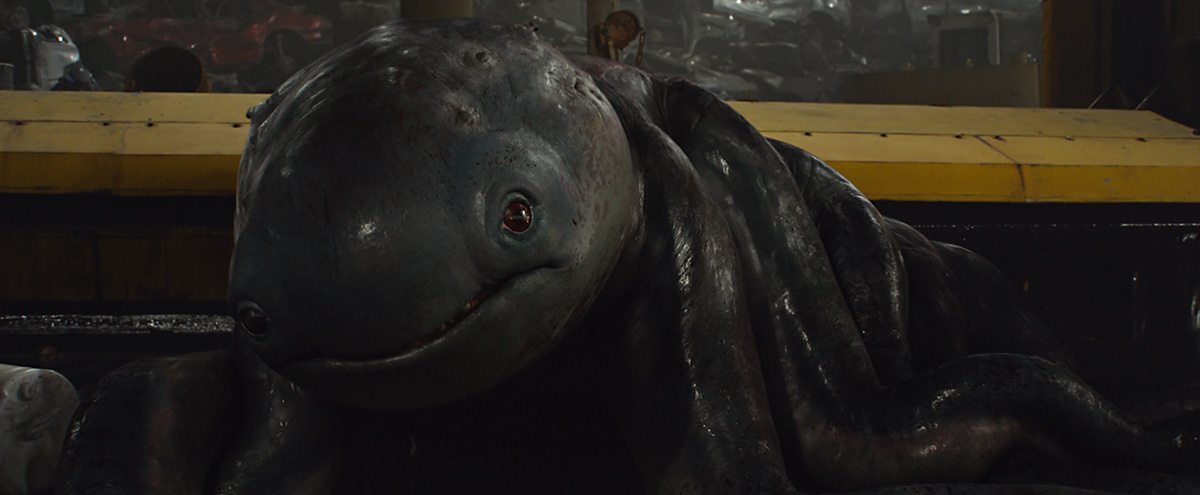
We had a crusher that would go up and down, and we had Lucas there, and we had a beanbag version of the creature, and we just kept going, ‘This could be a cool shot, let’s shoot it from this angle. Let’s try this, let’s try that, let’s hand-hold it over his shoulder.’ That whole sequence is hand-held I think. So most of the scene was conceived in boards, then shot really freestyle, and then created in editorial. And then obviously MPC went in and laboriously animated a realistic looking character with eight tentacles.
The other sequence is the build-up to the final truck chase. There’s such a great momentum behind that. Can you talk about building that in editorial and also working out the right pacing for a scene like that?
Chris Wedge: I’ll tell you one thing – I developed a much faster sense of editing pace on this movie. And part of it was from previewing it. And I know people poo-poo previews, but I’ve become a great advocate. Because you’re not looking for people’s opinions on things when you preview it. You’re just sitting there with them while they watch it feeling the level of engagement. And you can tell if something’s too slow, you can tell if you’re starting to lose them. You can tell if they missed something. You can tell if a joke isn’t funny. It gives you ideas about where to put a funnier joke. I probably sat in about five preview audiences with this movie. And then every time I was able to engage them more and more.
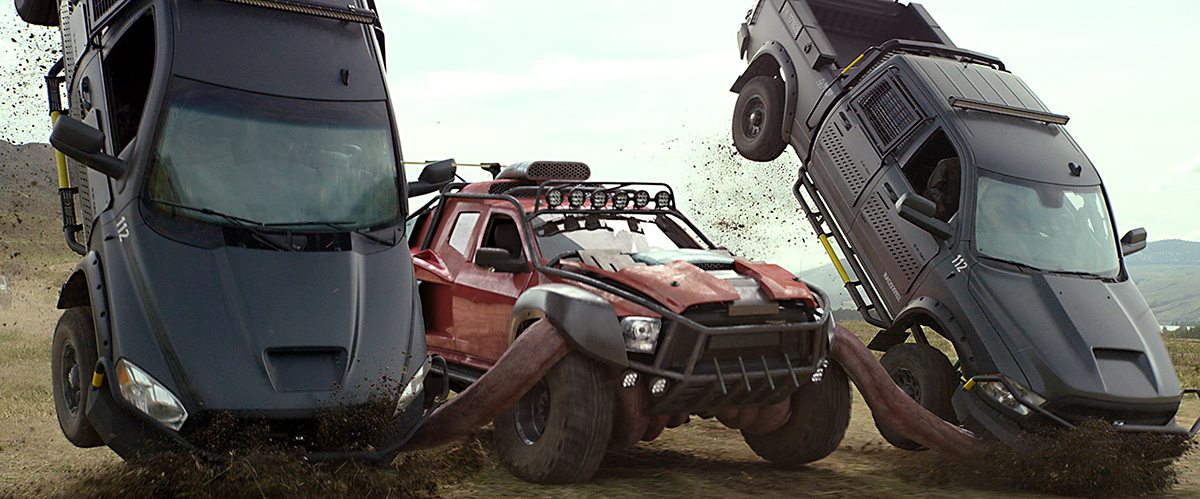
So I think the magic of watching a movie is that you feel as though it’s happening for the first time, and it feels like a conversation. And sometimes it takes a little tuning to get the pacing right. The first cut of the movie was about a half-hour longer than the final cut.

